Software is the new content
You had a good run, blogs.
The year is 1995. The internet is just taking off. Nascent search engines are helping early adopters on the internet discover websites. The word “blog” and the term “SEO” haven’t been invented yet. At this point, methods of ranking websites are extremely rudimentary — mostly around meta tags and certain keywords indicating what your website was about. Soon, this begins to lose signal as every websites begin “keyword stuffing.”
The year is 2004. Google has just gone public, and the revolutionary PageRank algorithm prioritizes websites based on quality of content and backlinks — leading to a massive improvement in signal to noise, and discoverability.
The year is 2012. There has been an explosion in company blogs (including startups). A massive cottage industry springs up to help companies with their SEO. Everyone tries to game the system; but Google’s regular algorithm updates penalized hacks, keeping publishers of content, and the SEO industry, on their toes. This generally proves effective; while everyone has a blog, most of them are of decent quality.
The year is 2019. Phones have now surpassed desktops in pageviews. Accordingly, mobile experience and page loading speed have become a critical aspect of SEO. Technologies are imagined and companies are formed to help businesses with load times (Vercel, Netlify). There has been a spike in slop, with clickbait, listicles, mass-production of SEO content, etc. But domain authority, load times, and backlinks still allow companies to stand out in a crowded market.
The year is 2025. Multi-modal content has become far more common thanks to the pandemic. Hiring offshore talent took content production to a whole other level… just in time for the advent of LLMs and AI-generated content. Right around this point of time, GEO / LEO (Generative / LLM Engine Optimization) emerges, to help companies “rank” in answers in the LLM chat interfaces (which are rapidly replacing search).
The state of user acquisition today
AI has taken “slop” to an art form — it used to mean that slop was low substance / low style; but now takes on the form of low substance / high style, fooling users and hence the PageRank algorithm.
Google is stuck between a rock and a hard place… even identifying LLM content has become a really hard problem (and hence, expensive… Google can’t possibly afford to analyze every page it scrapes); also: if the goal is good content (measured by user perception), who’s to say this is even a problem!
In parallel, the rise of GEO/LEO means that, instead of humans producing content and humans consuming them… LLMs are now producing and consuming the content. The best answer from Google (and SEO experts) is: “if your content is still helpful and high quality, then it will still help your domain authority.”
And finally, various digital means of finding customers has also faded:
Community building was all the rage during the pandemic, but was overdone; there are now too many Slack communities (and a graveyard of community management startups).
Performance marketing has gotten increasingly expensive, especially due to privacy regulations and Apple’s ATT.
Cold email is completely dead; open rates have plummeted and response rates round to zero.
There is now a glut of podcasts, and LinkedIn / TikTok content is gradually becoming slop, too.
Large companies have lots of ways to generate leads: their brand is a moat in this era, and they have capital to show up in force at conferences and host in-person events.
Attention is all you need…
There is always a push and pull, always a cycle: when a signal emerges, it gets gamed. This leads to massive quantity, inevitable to degraded quality, and the signal loses way to noise. We saw this above: with meta tags, then content, then loading speeds, then programmatic SEO… Each cycle brings with it a “proof of work” — a way for companies and content creators to stand out from the pack. A way to produce quality content that is not just a lead magnet, but an enduring brand artifact.
What edge does a high-quality startup still have today? In other words, what breeds quality, but is weakly or inversely correlated to scale?
Hard-won expertise
Taste (hopefully)
Speed
Fortunately — and just in the nick of time — there is now a way for a startup to package all of this together, in a way that forms a new proof of work.
The rise of vibe coding — quickly building expressive mini-apps using AI-assisted development and intuition — has lowered the cost of building software to nearly zero.
In 2025, someone with negligible coding skills but with deep, hard-won insight and strong product instincts can build powerful mini-apps on their own… apps that would have taken an engineer weeks or months to build even a couple of years ago.
What does that mean for the market?
On the one hand, we will no doubt be a massive wave of “fast fashion” apps, just as we saw in the wake of the iOS App Store in 2008. The indie hacker community is ready and waiting, and we’re seeing new products spin up left and right.
On the other hand, the App Store also saw the birth of massive companies like Uber, Snapchat, TikTok — all of which thrived in a mobile first environment.
While vibe coding is not (yet) at a point where it can build true enterprise grade software, it is absolutely perfect for offering true value to users, gaining goodwill, and building credibility by demonstrating expertise in the market. (These are exactly the things SEO was great at in the early days, before it got sloppified!)
This means that the first movers are in prime position to demonstrate their authority and taste to build a suite of (free, publicly available) tools to create brand new top-of-funnel.
Software is the new content.
Vibe Magnets: Software is the New Content
SEO has become synonymous with blogs and text, but there’s no actual reason this needs to be the case. Here’s how lead magnets measure up on some of the critical criteria for domain authority (disclaimer: heavy input from my friend Chad Gippity below):
Tools go toe to toe with text & AV content on every dimension except effort. With the cost of software going to zero, we should expect this to flip (if it hasn’t already).
We’ve been leaning into this, with Autograph Tools
We started in…
April: a rebuild of the Fair Offer, 5M+ offer combinations via an algorithmic approach — for any title, any stage, anywhere in the world
May: the Culture Compass, a Myers-Briggs-style personality test, but for companies
July: the Weighing Machine, a back-of the envelope DCF to quick (and very accurately) estimate a company’s fair enterprise value
August: the Org Designer, giving finance execs / founders the ability to quickly design their dream organization in 15-30 minutes, without mucking around in spreadsheets
We’re aiming to ship one of these every month. And all of them are free.
It’s early days, but it certainly appears that a) people find them useful and b) they endure in utility over time. Despite no attention to keyword management…
Fair Offer gets thousands of visitors a month.
The Weighing Machine gets hundreds of visitors and thousands of uses per month over the last 2 months.
If you want to play this game on hard mode, there’s no reason a vibe magnet needs to be an “applet.”
With the state of vibe coding today, it is also possible to build full-fledged applications, and give them away for free.
We recently did this with The Org Designer. It lets a founder, CFO, or department leader model out their ideal organization in ~15 minutes.
🪓 This is a lightweight version of many competitors’ products. If we can give this away for free, how powerful do you think our actual product is?
A starter kit for building vibe magnets
Building an entire app like the Org Designer — not an applet like the Fair Offer or the Weighing Machine — is more involved, has security considerations, and is out of the scope of this post.
But if you’re building “applets” (i.e., a public-facing tool with no login or persistent user data), you only need three things:
a) An app builder: Vercel v0, Replit, Lovable, Bolt, etc. all have pros and cons, and “personality.” Replit is more “full-stack” (comes with built-in servers and databases), Lovable does landing pages and simple apps really well, Bolt is good at mobile-native support as well… but — for this use case — especially given my choice of “database” below — I find Vercel’s v0 the easiest to work with.
I found that it is better than the others at both a) spinning up the first version really quickly, and b) being quicker to make fine-tuning edits to get what I want.
b) A “database”: This is barely a database; it only needs to do two things: a) record entries for what people type in (to understand how people use it), and b) collect leads / emails.
This is why I recommend Airtable: it’s not as “robust,” but it’s extremely user friendly and easy to connect to other systems (e.g., you can easily set up an automation to pipe notifications into your Slack instance, or use the Zapier integration to push leads to your CRM). I think this is a better choice than a more robust DB like Supabase or Neon; they are overkill for “applets,” and non-technical builders will find them more complicated to work with.
v0 and Airtable don’t integrate out of the box, but it turns out it’s super easy.
Spin up your app in v0
Configure the basic tables where you want to store a) the output of your users’ entries and b) their contact info from the lead form
Ask v0 to connect to the Airtable API, and provide your Personal Access Token in the chat; v0 will store it in your environment variable and you’ll be all set!
c) Hosting: Most app building platforms handle this for you; but you’ll still need to have it show up correctly on your website. The simplest way to do this is to set up with a subdomain (e.g., widget.mywebsite.com) but arguably this is worse for your SEO than using a subfolder / page (e.g., mywebsite.com/widget). This is a bit gnarly but very doable with a little help from an LLM.
How to run the vibe magnet playbook
Here are a few things we’ve learned in our 6 months building these:
Leverage your expertise and hard-won insights. We tried very hard to build genuinely useful things — things meeting the bar that other companies charge for, but which we were able to build quickly because we just understand the space that damned well.
Building something is easy. Building something good is hard. If you put out software slop, it’s not really much better than putting out SEO slop. Spend the time to build something incredible. If it’s successful, this will be the first impression that many prospects will have of your brand.
90%+ of carpentry is sanding. If you’re doing it right, the quick-and-dirty version might only take an hour… but the polish and care required for a really great resource takes 40-50 hours, and a really good app takes 100+ hours.
Just because it's free to your customers doesn't mean it's free for you — especially in human capital. Quality products take time and care to build, and maintain. Ensure that you can spare the bandwidth.
Charging for it might be more trouble than it’s worth. We had a serious debate over whether to charge for the Org Designer — we’re really proud of it. But if we charged for it, we’d have to provide proper support, keep improving it, get on sales calls… so we decided to price all of them at $0.
Be careful about accepting sensitive user data. In order to limit distractions to the engineering team, we involved them only minimally when building our magnets. We took security precautions, but even so we were very cautious to avoid collecting sensitive information from users. E.g., the Org Designer doesn’t ask for employee info or personally identifiable info; just high level information about number of roles.
Build for your persona, not for your product. Just like with content, don’t try to make things that are only directly relevant to your product. It’s okay to build adjacent things, as long as they still speak to your ICP.
Your magnets should ideally make each other better. Ideally, the IP from one product can be woven into another. For example, we’re going to reuse the Weighing Machine algorithm to create a fundraising strategy guide for CFOs & Founders. We’re going to combine Fair Offer and the QSBS Calculator into a net new employee resource.
Distribute it, constantly. We regularly share the tools where it’s organic and relevant… on X, on LinkedIn, and woven into in-person conversations with customers or prospects.
Capitalize on traffic. When you get high intent traffic, gather their lead forms and guide prospects to your product effectively. (Note: we’re really bad at this at Autograph…)
Final Notes
We might see the invention of a new job function. Just as “SEO Specialist” and “Growth Engineering” became job functions over the last 20 years, it’s likely that a new role will emerge to fill this role: someone with a terrific sense of product taste, quick at iteration, and effective at automation (to convert leads). That said — I think it’s likely that the best of these products will be built by founders. The farther it gets from the center of gravity for the company, the sloppier it will feel. Founders closest to the problem, and tend to be particularly good at taste and speed.
This too will turn to slop. Just as every wave in the past, we’ll see this gamed, too. But we’ll probably have a few years before everyone gets around to it.
Shoutouts to the trailblazers who did it before it was cool: Well before the days of vibe coding, there were lead magnets. The first ones to do this well systematically were LTSE Tools (sadly, their tools are no longer around). Many companies have done this in one-off ways that are powerful (Hubspot’s Website Grader, Canva’s Resume Builder, Grammarly’s Grammer Checker), or clever (Zapier’s “connect X to Y” programmatic SEO that blurred content and tooling). But when it’s not just a basic tool but something that provides genuine, sometimes unbelievable value, it can have an outsized impact. If a lead magnet is simply a free resource given to potential customers without signing up, the most effective lead magnet of all time is also the most successful product of all time: ChatGPT. So… yeah. One of these could be so effective that it drives your whole company forward. And the more relevant it is to your core audience, the closer it is to your actual product, the more impactful it can be.
It’s not easy to build a vibe magnet. But it’s easier than it’s ever been. It’s gone from “hard and expensive” to “very accessible with some time and elbow grease” — suddenly, in the last six months. That’s a massive unlock. Now, these can be built by someone (even someone who can’t code) in a few days. We should be excited to see what the most clever, scrappy companies produce in the months and years to come.
It’s so cool to live in the future. Just like any other AI-powered activity that has emerged in the last couple of years, it’s worth reminding ourselves: this is the worst it will ever be.


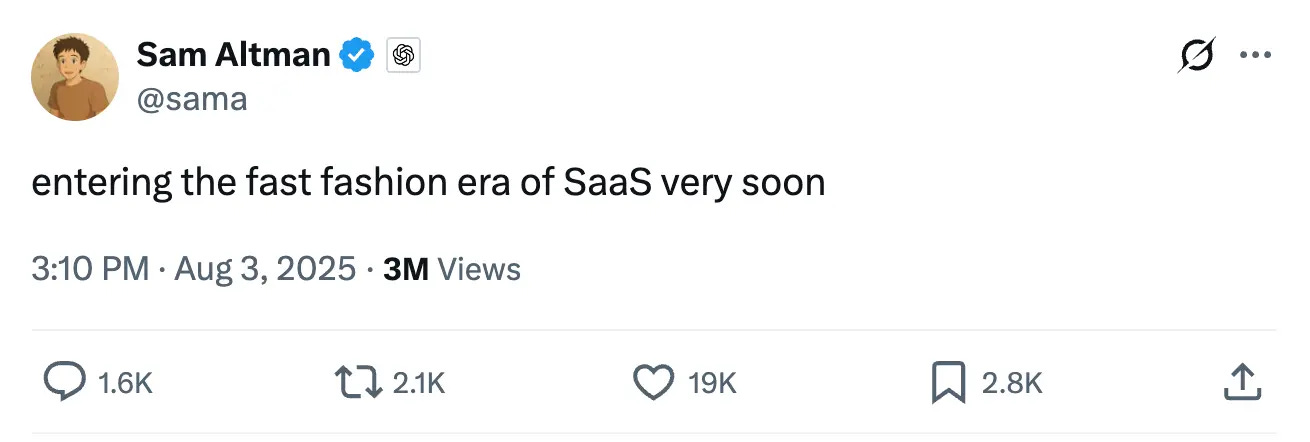
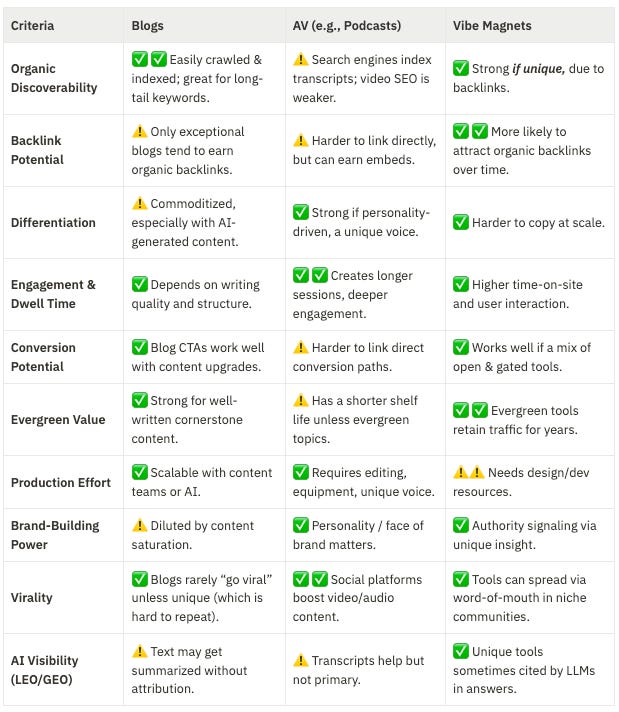
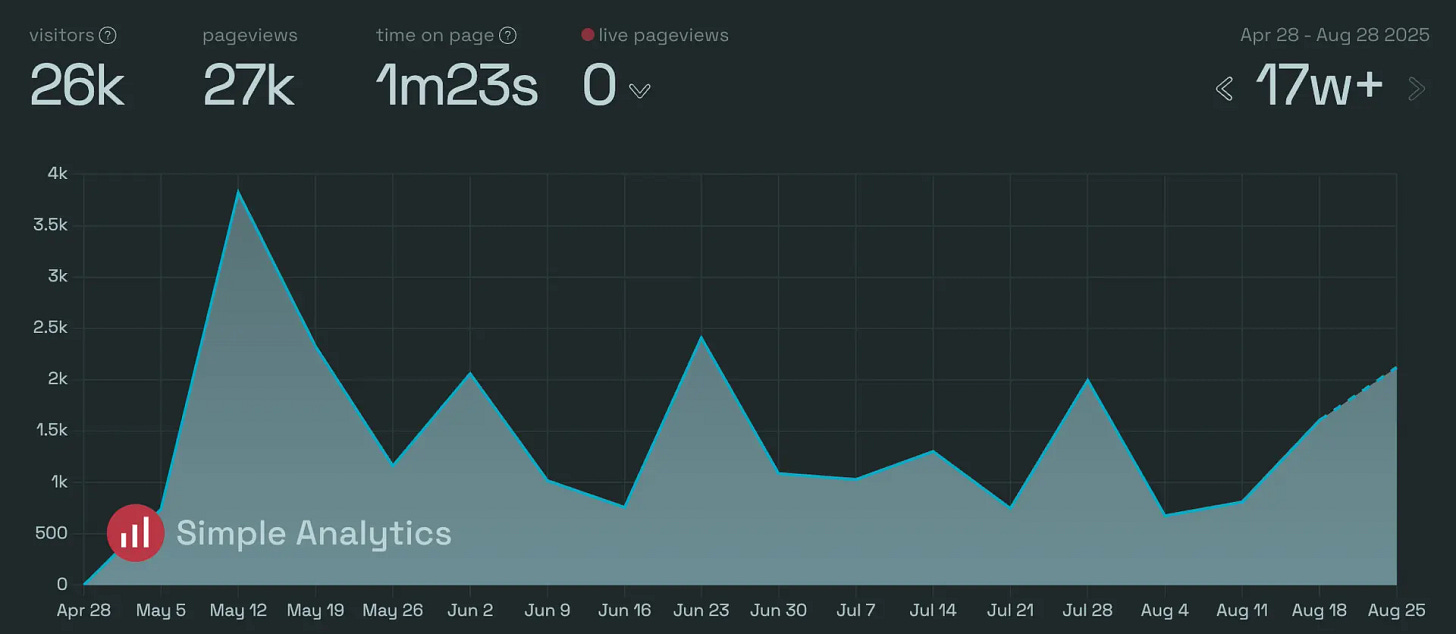
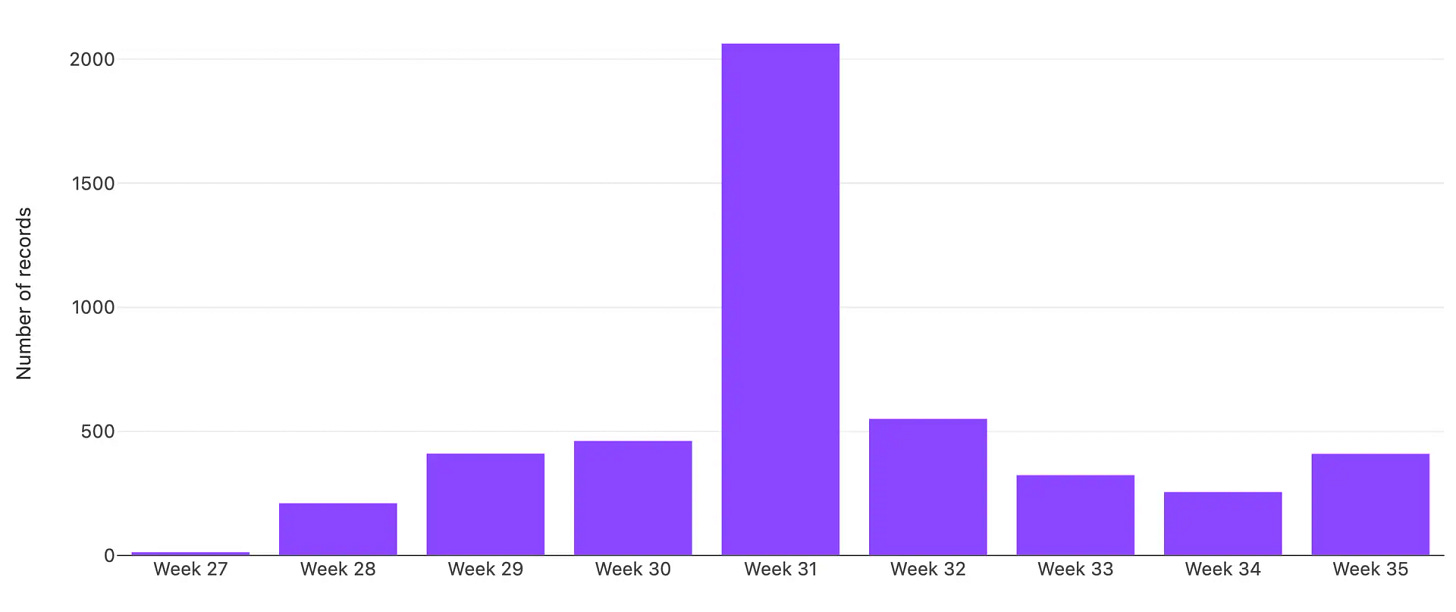
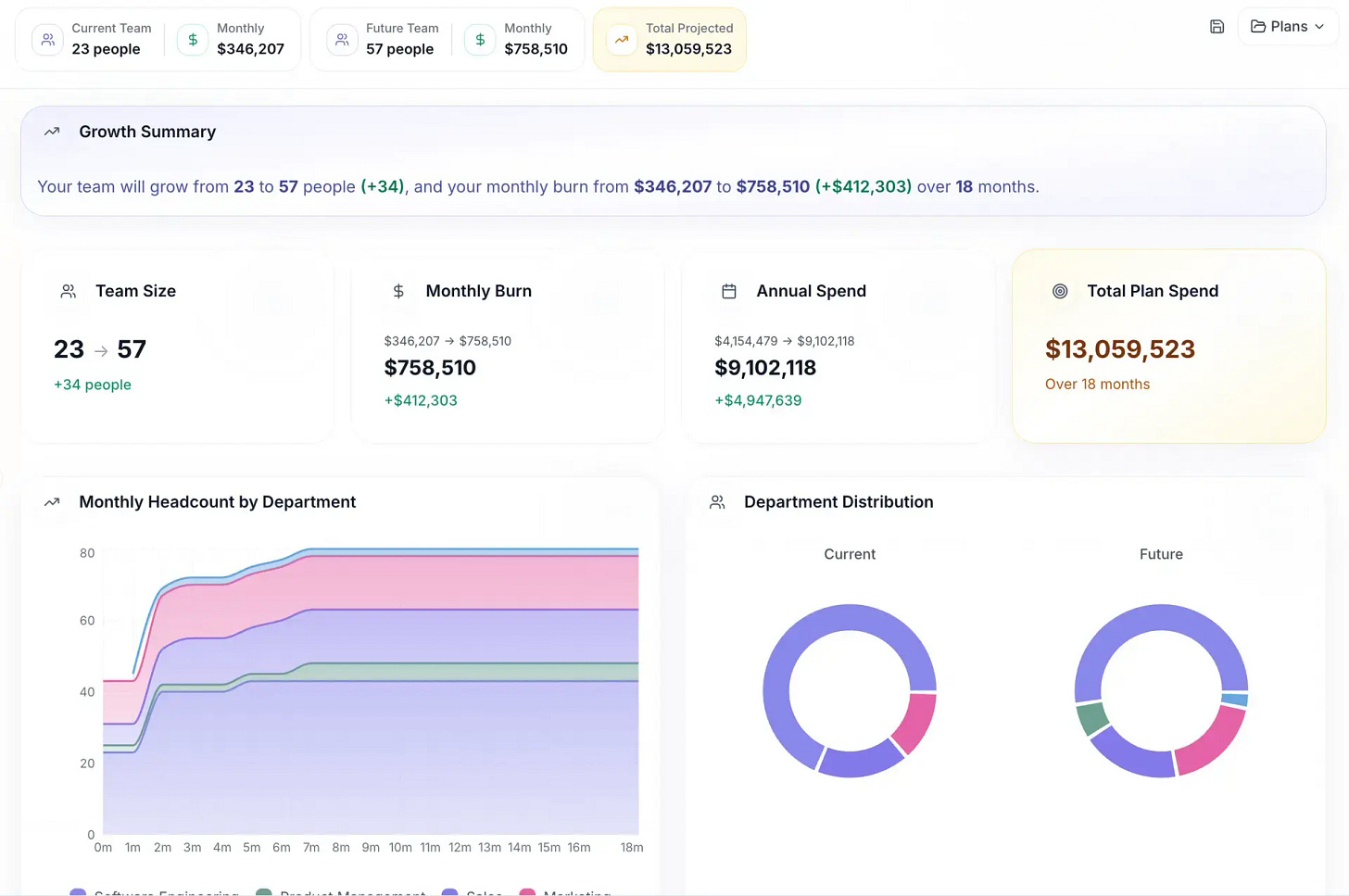
Did you stop maintaining The Weighing Machine? It seems not to be working for me right now, but I remember using the tool when it was on your personal site (but can't find that link!)